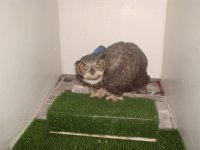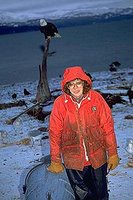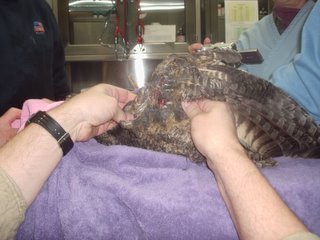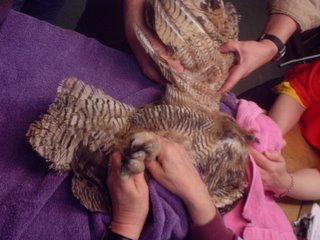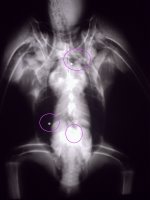 How do you get this kind of job? It sounds like the ticket for me. I'm not much on fancy suits, but I like the hat.
How do you get this kind of job? It sounds like the ticket for me. I'm not much on fancy suits, but I like the hat.The Ravens in the Tower of London have been locked up to protect them from the Bird flu.
It is not known when the ravens first came to the Tower of London, but their presence there is surrounded by myth and legend. Unusually for birds of ill omen, the future of both Country and Kingdom relies upon their continued residence, for according to legend, at least six ravens must remain lest both Tower and Monarchy fall.
The first Royal Observatory was housed in the north eastern turret of the White Tower. Legend has it that John Flamsteed (1646 - 1719), the 'astronomical observator' complained to King Charles II that the birds were interfering with his observations. The King therefore ordered their destruction only to be told that if the ravens left the Tower, the White Tower would fall and a great disaster befall the Kingdom. Sensibly the King changed his mind and decreed that at least six ravens should be kept at the Tower at all times to prevent disaster.
The importance of the ravens is so great, in fact, that there is an official raven master who tends to the birds and ensures these animals remain at the Towers. The Raven Master Derrick Coyle is a Yeoman Warder or 'Beefeater' dedicated to caring for the Tower's unique Unkindness of Ravens. Coyle, a former soldier who has tended the Tower's ravens for 22 years, knows his six charges well. "They're smarter than we are," he said. "They are at the top of the pecking order in the bird world."

Ravens can live for about 25 years. When one of the Tower ravens dies it is usually replaced by a wild one. Recently, however, some have been hatched in captivity. The oldest raven to live at the Tower was Jim Crow, who died at the age of 44. The oldest raven curently living at the Tower is Hardey, who is 26 years old.
The six, notoriously unfriendly birds -- Branwen, Hugine, Munin, Gwyllum, Thor and Baldrick -- already have their wings clipped to prevent them from flying away. The birds are getting used to their new surroundings, Coyle said.
"We are taking advice on the vaccinations against avian flu, and in the meantime, we will continue to give our six ravens as much care and attention as they need," he added. He is confident the birds are comfortable in their new custom-built indoor aviaries in the medieval Upper Brick Tower. He visits at 5 a.m. each day to give them their regular diet of raw meat, blood-soaked biscuits and the occasional rabbit.
"The first day was very stressful for them, but now they're happy," Coyle said, dressed to meet visitors in his scarlet-black Beefeater uniform. "When I walked in this morning, Thor - the one who talks - said 'Good morning.' "
Coyle now has to substitute his yeoman's outfit for a full, protective bird flu suit when he tends to the ravens.






